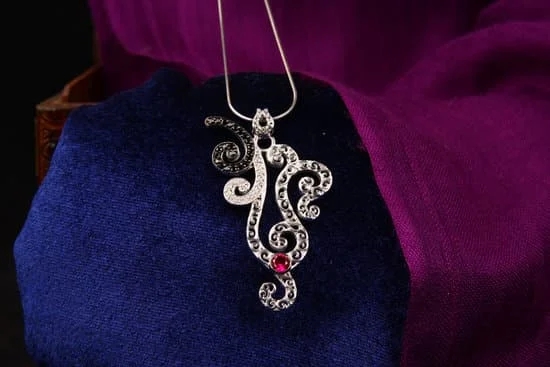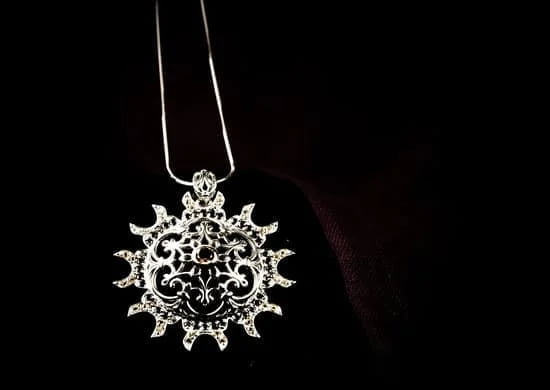Are you wondering how to make gold filled jewelry? Gold filled jewelry is a popular and affordable alternative to solid gold, offering the beauty and elegance of gold at a fraction of the cost. In this article, we will explore the art of creating stunning gold filled jewelry, covering everything from its origins and benefits to the materials, techniques, and care involved in making these beautiful pieces.
Gold filled jewelry is made by bonding a layer of 14k or 18k gold to a base metal through pressure and heat. This results in a durable and long-lasting material that can withstand daily wear and tear. With a rich history dating back to the Victorian era, gold filled jewelry has been cherished for its timeless appeal and economic value.
Using gold filled materials offers several benefits, including affordability, hypoallergenic properties, and resistance to tarnishing. Whether you’re new to jewelry making or looking to expand your crafting skills, creating your own gold filled jewelry allows for endless creative possibilities and the ability to craft personalized pieces for yourself or others. Let’s delve into this fascinating world of gold filled jewelry making.
Materials and Tools Needed
Making gold filled jewelry requires a variety of materials and tools to achieve the desired look and quality. The main components for creating gold filled jewelry include gold filled wire, beads, chains, clasps, and findings.
Gold filled wire is made by bonding a thick layer of 14k or 12k gold to a base metal core, resulting in a durable and long-lasting material that can withstand everyday wear. Beads, chains, clasps, and findings also come in gold filled options to ensure a cohesive and uniform design.
In addition to materials, there are several tools that are essential for making gold filled jewelry. These include round-nose pliers for forming loops and curves in wire, chain-nose pliers for bending and gripping wire components, wire cutters for trimming excess wire and cutting chains, as well as bead reamers for enlarging bead holes if necessary.
Other helpful tools may include a jeweler’s hammer for texturing metal surfaces, a jeweler’s file for smoothing rough edges, and a soldering iron or torch for joining metal components.
When selecting materials and tools for making gold filled jewelry, it is important to consider the quality of the items being used. High-quality materials will yield superior results in both appearance and durability. Therefore, it is recommended to source supplies from reputable suppliers who offer genuine gold filled products. By investing in top-notch materials and tools, jewelry makers can create stunning pieces that customers will cherish for years to come.
| Materials | Tools |
|---|---|
| Gold Filled Wire | Round-Nose Pliers |
| Beads & Findings | Chain-Nose Pliers |
| Jeweler’s Hammer | Wire Cutters |
Choosing the Right Gold Filled Wire and Components
When it comes to making gold filled jewelry, one of the most important decisions you’ll make is choosing the right gold filled wire and components for your pieces. There are various types of gold filled wire available, each with its own unique characteristics and qualities. It’s essential to understand these differences and consider factors such as color, gauge, and composition when selecting materials for your jewelry.
When choosing gold filled components for your jewelry, it’s crucial to prioritize quality over price. Look for reputable suppliers who offer high-quality materials that are durable and long-lasting. Consider factors such as tarnish resistance, hypoallergenic properties, and overall aesthetic appeal when selecting components for your designs.
To ensure that you are using high-quality gold filled wire and components, it’s important to purchase from trusted suppliers who adhere to industry standards and regulations. Conduct thorough research on potential suppliers, read customer reviews, and ask for samples or certifications if possible. By investing in top-notch materials, you can create stunning and durable gold filled jewelry that will stand the test of time.
| Gold Filled Wire | Gold Filled Components |
|---|---|
| Comes in various colors including yellow, rose, and white gold | Earring findings |
| Available in different gauges (thickness) for different purposes | Clasps |
| Made by bonding a layer of solid gold to a base metal core | Chain links |
Techniques for Making Gold Filled Jewelry
Step-by-Step Guide
To make gold filled jewelry, start by gathering the necessary materials and tools, including gold filled wire, beads or gemstones, clasps, and wire cutters. Once you have all your materials ready, begin by planning out the design for your piece. Whether it’s a bracelet, necklace, or earrings, sketching out your design will help you visualize the final product before you start working with the materials. Then, follow these steps:
- Cut the desired length of gold filled wire for your piece
- Use round nose pliers to create loops and shapes
- Add beads or gemstones as desired
- Attach clasps to complete the piece
Following these basic steps will give you a foundation for creating your own unique gold filled jewelry pieces.
Wire Wrapping and Soldering Techniques
Wire wrapping is a common technique used in making gold filled jewelry. It involves wrapping or weaving wire around beads or other components to create intricate designs. Soldering is another important skill to learn when working with gold filled materials. This technique allows you to join different pieces of metal together using solder and a torch.
Learning how to proficiently use these techniques will greatly expand the range of jewelry pieces that you can create. There are many resources available online that offer tutorials on both wire wrapping and soldering for those who are just starting out.
Tips for Creating Unique Designs
When making gold filled jewelry, don’t be afraid to let your creativity shine through. Experiment with different shapes and patterns using the wire wrapping technique. Consider incorporating various colors and textures by using different types of beads or gemstones.
Additionally, think about how you can personalize each piece to make it truly one-of-a-kind. Consider adding initial charms or birthstone accents to cater to individual preferences.
By masterfully combining wire wrapping and soldering techniques while staying true to your creative vision, you’ll be able to produce stunning handmade gold filled jewelry that stands out from mass-produced pieces found in stores.
Care and Maintenance of Gold Filled Jewelry
Gold filled jewelry is a beautiful and durable alternative to solid gold, but proper care is essential to ensure its longevity and shine. Here are some tips for cleaning and maintaining your gold filled jewelry:
- Gentle Cleaning: Use a soft cloth or a gentle jewelry polishing cloth to wipe down your gold filled pieces after each wear. This will help remove any oils, sweat, or dirt that may have accumulated on the surface. Avoid using harsh chemicals or abrasive materials that can scratch or damage the gold fill.
- Avoid Moisture: Moisture can cause tarnishing and discoloration of your gold filled jewelry. Be sure to remove your jewelry before swimming, showering, or participating in activities where it may come into contact with water. If your pieces do get wet, make sure to thoroughly dry them before storing.
- Proper Storage: When not wearing your gold filled jewelry, store it in a cool, dry place away from direct sunlight. Consider placing each piece in a separate pouch or compartment to prevent scratching and tangling with other items.
- Professional Cleaning: For stubborn tarnish or dirt buildup, consider taking your gold filled jewelry to a professional jeweler for cleaning and polishing. They have the expertise and tools to safely restore the luster of your pieces.
- Regular Inspection: Periodically inspect your gold filled jewelry for any signs of wear or damage, such as loose stones, weak clasps, or broken links. Addressing these issues promptly can prevent further damage and extend the life of your jewelry.
By following these care and maintenance tips, you can keep your gold filled jewelry looking beautiful for years to come.
Design Inspiration and Ideas
Showcasing Gold Filled Jewelry Designs
One of the best ways to get inspired when making gold filled jewelry is to see what others are creating. Take some time to showcase different designs that have caught your eye. These could be pieces made by other jewelry makers, or even vintage gold filled jewelry that you find particularly beautiful. By studying these designs, you can start to develop a sense of what styles and techniques resonate with you.
Personalized and Custom Pieces
Consider creating personalized and custom pieces for your customers. This could involve incorporating birthstones, initials, or other meaningful symbols into your designs. Offering customization can set your jewelry apart and create a strong connection between the piece and its wearer. It’s important to establish clear processes for taking custom orders, including how to communicate with customers about their preferences and how long it will take to fulfill their order.
Finding Inspiration and Staying Creative
Finding ongoing inspiration is crucial for any jewelry maker. Whether it’s through nature, art, fashion, or culture, there are endless sources of inspiration waiting to be discovered. Keep a sketchbook or digital folder where you can collect images, sketches, and notes that spark new ideas.
Make time for creative pursuits outside of jewelry making as well – painting, photography, or even cooking can all feed into your creative energy and help keep your designs fresh and innovative. Remember that the key to staying creative is being open-minded and continually seeking out new influences.
By exploring these design inspiration and ideas for making gold filled jewelry, you can hone your craft while also allowing for personal expression and creativity in each piece you create.
Selling and Marketing Gold Filled Jewelry
When it comes to selling and marketing gold filled jewelry, there are several strategies you can use to reach potential customers and build a successful business. Whether you plan to sell your handmade jewelry online, at craft fairs, or through local boutiques, it’s important to have a solid marketing plan in place.
To get started, here are some tips for selling and marketing gold filled jewelry effectively:
- Create a professional online presence: Building an online store or website is essential for reaching a wider audience. You can also use social media platforms such as Instagram and Facebook to showcase your designs and connect with potential customers. High-quality product photos and engaging content will help attract attention to your jewelry.
- Price your jewelry competitively: Research the market value of similar gold filled jewelry pieces and set your prices accordingly. Consider factors such as the cost of materials, labor, and desired profit margins. Offering discounts or promotions can also help entice customers to make a purchase.
- Participate in craft shows and events: Selling your gold filled jewelry at local craft shows, pop-up markets, and art festivals is a great way to connect with customers in person. Engaging with shoppers directly allows you to share the story behind your designs and build a loyal customer base.
- Collaborate with other businesses: Partnering with local boutiques or fashion stores that align with your brand can help increase exposure for your gold filled jewelry. Wholesale partnerships can provide steady sales while also introducing new customers to your unique creations.
Resources and Further Learning
In conclusion, making gold filled jewelry can be a rewarding and fulfilling craft for both beginners and experienced jewelry makers. By understanding the history and benefits of gold filled jewelry, as well as learning about the materials and tools needed, anyone can start creating their own beautiful pieces.
Choosing the right materials and components, along with mastering techniques like wire wrapping and soldering, will allow artisans to create unique designs that are sure to impress. Taking care of gold filled jewelry is also important to ensure its longevity, and finding inspiration for new designs can help keep the creative spark alive.
For those interested in delving deeper into the world of gold filled jewelry making, there are plenty of resources available for further learning. Whether it’s through books, websites, or courses, artisans can continue to expand their knowledge and skills in this craft.
Additionally, joining a community or network of jewelry makers can provide valuable support and guidance along the way. With dedication and a passion for creating stunning pieces, anyone can learn how to make gold filled jewelry and even turn it into a successful business venture.
Overall, the process of making gold filled jewelry involves creativity, skill, and attention to detail. By following the tips provided in this comprehensive guide and seeking out additional resources for further learning, artisans can embark on an exciting journey into the art of crafting beautiful gold filled jewelry pieces that will be cherished for years to come.
Frequently Asked Questions
How Do You Fill Gold?
Gold fill is a process in which a layer of real gold is permanently bonded to a base metal, usually brass. To fill gold, the base metal is first cleaned and polished, then the gold is mechanically bonded or heat fused to the base metal.
How Do You Solder 14k Gold Fill?
Soldering 14k gold fill involves using a solder that is specifically designed for gold-filled jewelry. The key is to use the right flame temperature and flux to ensure that the solder properly bonds with the gold fill without damaging it.
It’s important to have a steady hand and attention to detail while soldering so as not to affect the quality of the jewelry.
What Is the Base of Gold-Filled Jewelry?
The base of gold-filled jewelry is typically made of brass or copper. These metals are durable and malleable, making them well-suited for bonding with the thin layer of real gold that gives gold-filled jewelry its distinctive appearance and properties. This combination allows for high-quality, affordable jewelry that has the look and feel of solid gold.

Welcome to my jewelry blog! My name is Sarah and I am the owner of this blog.
I love making jewelry and sharing my creations with others.
So whether you’re someone who loves wearing jewelry yourself or simply enjoys learning about it, be sure to check out my blog for insightful posts on everything related to this exciting topic!





